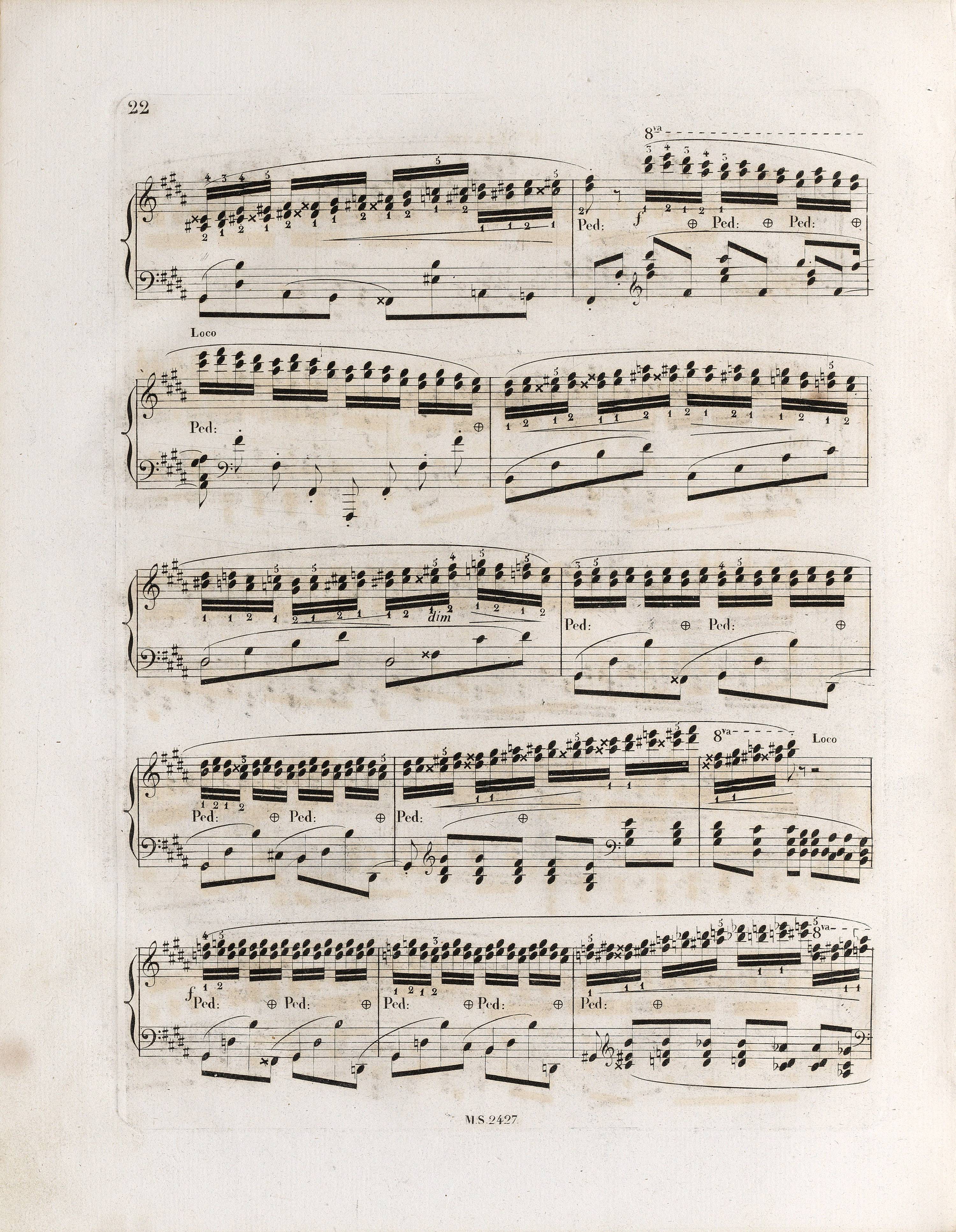




Determining the affiliation of the middle components of chords to one of the two written voices sometimes poses a serious difficulty in Chopin's works. The notation is often inaccurate, there are also note heads which are not linked to any stem or just the opposite – linked with one stem going both upwards and downwards (cf., e.g., the autograph of the Etude in A minor, No. 4). This is a possible explanation of the differences in this bar between FC (→GE), FE and EE. Due to the fact that the authentic pedalling makes that this detail of notation influences the sound effect to a minor extent, in the main text we adopt the notation of the basic source, i.e. FE.
Compare the passage in the sources »
category imprint: Differences between sources
issues:
notation: Rhythm





